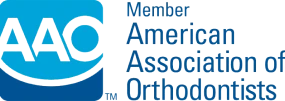
Am I too old to get treatment?
Healthy teeth can be moved at any age. Members of the American Association of Orthodontists (AAO) regularly treat adult patients. At Edmonds Orthodontics, about one in three is an adult. Many patients are in their 50s, 60s, 70s, and even 80s. Depending on your circumstances, your orthodontist may work with your primary care dentist and other dental specialists, as necessary, to help you achieve optimal dental health.
Can a deep bite correct itself over time?
Deep bites typically do not resolve on their own, and if left untreated, they can worsen and lead to further orthodontic issues. Factors such as tooth wear or habits like teeth grinding can sometimes exacerbate the condition in adults.
Does insurance cover orthodontic treatment?
Many people have dental insurance that includes orthodontic benefits, usually provided by their employer. Such insurance covers a portion or percentage of the fee for orthodontic treatment, many times there may be a specific dollar amount or lifetime cap. If your dental insurance is through your employer, your human resources department may be able to provide coverage details. The information can also be obtained directly from the insurance company. With your permission, Edmonds Orthodontics may be able to confirm your insurance benefits for you.
How long will I need to wear a retainer?
Typically, a retainer is necessary for a lifetime, though the frequency of wear may decrease over time. Retainers are prescribed for two reasons: first, to allow the bone that holds teeth to rebuild after teeth have moved, and second, to maintain the healthy new positions of teeth after active orthodontic treatment ends. Your body changes your whole life, and your teeth change too. The only way to keep your teeth in the ideal position created by your orthodontic treatment is to wear retainers for life!
Is a deep bite the same as an overbite?
“Deep bite” and “overbite” are often used interchangeably to describe a malocclusion where the upper front teeth significantly cover the lower front teeth vertically. This is often confused with an overjet, which refers to the horizontal distance between the upper and lower front teeth. Commonly known as “buck teeth,” overjet occurs when the upper front teeth extend forward at an angle, whereas an overbite or deep bite occurs when the upper front teeth vertically cover the bottom front teeth.
Should we wait to see the orthodontist until my child has all of his/her permanent teeth?
No. Waiting until all the permanent teeth have come in, or until facial growth is nearly complete, could make correction of some orthodontic problems more difficult. Some things cannot be accomplished once the face and jaws are no longer growing.
What age is appropriate to start orthodontic treatment?
Orthodontic treatment can begin at various ages, depending on the individual’s dental needs. Here’s a general guideline:
- Early Childhood (Ages 7-10):
The American Association of Orthodontists recommends that children have their first orthodontic evaluation by age 7. At this age, our doctors can identify potential issues with jaw growth and emerging teeth. Early treatment, also known as Phase I treatment, can help guide the growth of the jaw and the eruption of permanent teeth, potentially preventing more severe problems later. - Pre-Teens and Teens (Ages 11-18):
This is the most common age range for orthodontic treatment. By this time, most or all of the permanent teeth have erupted, and the jaw is still growing, making it an ideal time for braces or aligners. Treatment during these years can address alignment, bite, and spacing issues effectively. - Adults:
Orthodontic treatment isn’t just for kids and teens. Many adults seek orthodontic care to correct long-standing issues or to improve their smile and oral health. Modern treatment options like Invisalign® or clear braces make orthodontic care more discreet and convenient for adults.
What are the benefits of orthodontic treatment?
Orthodontic treatment offers numerous benefits, both cosmetic and health-related. Here are some of the key advantages:
1. Improved Aesthetics:
- Enhanced Smile: Orthodontic treatment straightens teeth, closes gaps, and corrects alignment, resulting in a more attractive smile.
- Boosted Confidence: A better smile can significantly increase self-esteem and confidence in social and professional situations.
2. Better Oral Health:
- Easier Cleaning: Straight teeth are easier to brush and floss, reducing the risk of tooth decay, gum disease, and other oral health issues.
- Reduced Wear and Tear: Proper alignment of teeth prevents uneven wear and tear on enamel, which can lead to damage over time.
3. Improved Functionality:
- Corrected Bite: Orthodontic treatment can correct bite issues such as overbite, underbite, crossbite, and open bite, leading to better chewing and speaking abilities.
- Jaw Alignment: Proper alignment of the jaw can alleviate issues such as jaw pain, TMJ disorders, and headaches caused by misalignment.
4. Prevention of Future Dental Problems:
- Prevents Tooth Loss: Correcting alignment and spacing issues can prevent overcrowding or excessive gaps, reducing the risk of tooth loss.
- Minimizes Risk of Injury: Protruding front teeth are more susceptible to injury, especially in children. Orthodontic treatment can help protect these teeth.
5. Long-Term Savings:
- Avoid Complex Procedures: By addressing issues early, orthodontic treatment can prevent the need for more complex and expensive dental procedures in the future, such as extractions, implants, or surgery.
6. Overall Well-Being:
- Better Digestion: Properly aligned teeth improve chewing efficiency, aiding in better digestion and overall health.
- Speech Improvement: Correcting alignment and bite issues can also improve speech, especially if the patient had difficulties caused by malocclusion.
Orthodontic treatment offers a comprehensive approach to improving not just the appearance of your smile, but also the overall health and function of your teeth and jaws.
What complications can arise from an untreated crossbite?
If overlooked, crossbites can trigger jaw misalignment, uneven jaw growth, premature wearing of the tooth enamel, facial asymmetry, and improper chewing, among other dental issues.
What happens if orthodontic problems are not treated?
Generally, untreated orthodontic problems may become worse. Lack of orthodontic treatment can be a factor in tooth decay, gum disease, destruction of the bone that holds teeth in place, tooth loss, chewing/digestive difficulties, or abnormal wearing away of tooth enamel. Ultimately, orthodontic treatment may cost less than the restorative treatment that could be needed to treat decayed, worn or lost teeth, or gum disease.
What is an AAO orthodontist?
Both Dr. Kim and Dr. Ohara are members of the American Association of Orthodontists (AAO). The AAO only admits those who have completed a specialty training program in orthodontics and dentofacial orthopedics after graduating from dental school for membership.Choosing an AAO orthodontist is your assurance that the doctor truly is an orthodontist because the American Association of Orthodontists (AAO) only admits orthodontists for membership.
What types of orthodontic treatments do you offer?
We offer a range of orthodontic treatments tailored to meet your specific needs:
Traditional Braces: Effective for correcting various dental misalignments using metal or ceramic brackets and wires.
Clear Aligners: Virtually invisible aligners that gradually shift teeth into alignment, offering a discreet orthodontic option.
Functional Appliances: Devices used to address jaw discrepancies and improve bite function in growing patients.
Retainers: Custom-made appliances to maintain teeth alignment post-treatment and prevent relapse.
Why does the AAO say that kids should see an orthodontist for a check-up no later than age 7? Isn’t 7 too young to get braces?
Around age 7, children have a mix of baby (primary) and permanent teeth. A check-up as permanent teeth take the place of baby teeth, and as the face and jaws are growing, gives the orthodontist a wealth of information. If a problem exists, or if one is developing, Dr. Kim and Dr. Ohara will be able to advise you on whether treatment is recommended, when it should begin, what form treatment will take, and estimate its length. Remember, there is a difference between an orthodontic check-up and actually starting orthodontic treatment. Only a few orthodontic problems will need correction around age 7. Even so, not all treatment is done using braces.
If no treatment is recommended yet, your child will be eligible to join our Kids Program, in which Dr. Kim and Dr. Ohara will check your child’s growth and development periodically. If treatment is needed, it can begin at the appropriate age for your child.
Will I have to have teeth extracted?
Our doctors are very conservative in their approach to removing teeth, however, removing teeth is sometimes required to achieve the best orthodontic result. Whether or not you will need to have teeth extracted for braces depends on several factors specific to your individual case. Here are some of the key considerations our orthodontists evaluate:
1. Severity of Crowding:
- If your teeth are severely crowded and there isn’t enough space in your jaw to align them properly, tooth extractions may be recommended to create the necessary room. This is particularly common in cases where there is significant overcrowding.
2. Jaw Size and Shape:
- The size and shape of your jaw play a significant role in determining whether extractions are necessary. If your jaw is small, it may not have enough space to accommodate all of your teeth, leading to the need for extractions.
3. Bite Alignment:
- If you have a severe overbite, underbite, or other bite issues, extractions might be necessary to help align your bite correctly. In some cases, orthodontists may extract teeth to help correct the bite without the need for more invasive procedures like surgery.
4. Protrusion of Teeth:
- If your front teeth protrude significantly, extractions may be recommended to bring the teeth back and achieve a more balanced profile.
5. Orthodontic Treatment Goals:
- The specific goals of your orthodontic treatment will also influence whether extractions are needed. If the goal is to achieve a significant improvement in alignment or bite, extractions may be necessary to achieve the best result.
6. Alternatives to Extractions:
- In some cases, orthodontists may use alternative techniques to avoid extractions, such as expanding the dental arch or using interproximal reduction (IPR) to create space between teeth. Modern orthodontic techniques often aim to minimize the need for extractions.
7. Age and Growth Considerations:
- Younger patients whose jaws are still growing may have more options for creating space without extractions, such as using expanders or other growth-modifying devices. Adults, whose jaws are fully developed, may have fewer alternatives to extraction if space is needed.
Will my child’s teeth get straighter as she ages?
It’s a common misconception that a child’s teeth will straighten on their own as they age. In reality, teeth are more likely to become more crowded or misaligned over time, not less. Here’s why:
1. Natural Growth Patterns:
- As a child grows, their jaws and facial bones develop, which can sometimes cause teeth to shift. If the jaws grow unevenly or if there isn’t enough space for all the teeth, this can lead to crowding or misalignment.
2. Eruption of Permanent Teeth:
- When a child’s permanent teeth begin to emerge (usually around age 6-12), they often come in larger than the baby teeth they replace. This can cause crowding or misalignment, especially if the mouth is small.
3. Oral Habits:
- Habits like thumb-sucking, tongue thrusting, or prolonged use of a pacifier can affect the alignment of teeth and the shape of the jaw, potentially leading to misalignment as a child grows.
4. Wisdom Teeth:
- In the late teens or early twenties, the eruption of wisdom teeth can cause crowding of the front teeth. Even if a child had relatively straight teeth in early adolescence, the emergence of wisdom teeth can lead to shifting.
5. Lack of Space:
- If a child’s mouth doesn’t have enough space for all the teeth to fit properly, they may overlap or become crooked. As a child ages, this lack of space often becomes more pronounced, not less.
6. Prevention and Early Intervention:
- Early orthodontic intervention, if necessary, can guide the growth of the jaws and the eruption of teeth, helping to prevent severe misalignment issues in the future.




